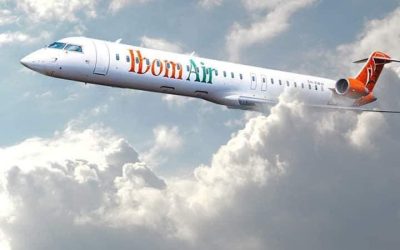
The safety, efficiency, and profitability of airline operations are all dependent on how quickly a flight can be turned around without violating any CAA rules. Catering, fueling, cleaning, pre-departure maintenance, weather, ticketing, checking, boarding, ramp coordination, and many other activities precede the arrival and take-off of a flight. However, it may interest you to know that there is a group of young men and women who work around the clock to ensure that all of these activities take place as planned, and these individuals are known as flight dispatchers/flight operations officers.

Flight dispatchers are the heartbeat of an airline; they assist in flight path planning by considering aircraft performance and loading, enroute winds, and are the primary liaison to the cockpit crew. Flight dispatchers coordinate all activities on the ground at an airport to ensure that aircraft are safely, quickly, and efficiently transitioned from landing to take-off. Dispatching flights in Nigeria is the same as in any other country, but there are some differences due to some inefficiencies and cultural differences. In this article, I’d like to go over some step-by-step guidelines for successfully dispatching a flight in Nigeria.
PRE-FLIGHT STEPS (Preliminaries):
- Because of the system’s time lag, you must be proactive in everything.
- Confirm if the aircraft is available for service.
- Study the flight schedule very well and confirm you are using the right version.
- Study the NOTAMS available and prepare to use it during crew briefing.
- If the flight is not scheduled, you must ensure that the landing notification reaches all agencies, and I repeat, all agencies. Then, make multiple copies of the sign landing notification and distribute them to all of the agencies’ operational offices as well as those in the field.
- If it’s a scheduled flight that they’re already used to, you can skip step 4, but you’ll still need to confirm the officer on duty in all relevant offices for the flight, so you can call them as soon as it departs to inform them of the ETA.
- Confirm the status of passengers at the counter
- Call the fueling company to inform them of the schedule, the estimated uplift, confirm receipt of the fueling mail, and finally call him to inform him of the ETA.
- After ensuring that all stakeholders are aware and prepared for the flight, the next level.
- Examine the area for any events or movement that could affect the flight’s departure or arrival at the station.
PRE-BOARDING STEPS:
As soon as the above steps were successful, `
- File your ATC flight plan on time, but if it’s a commercial flight, the flight plan may have already been signed by other dispatchers in the previous shift, or better yet, confirm that the ATC flight plan has been signed and is still valid.
- As part of your preparation for the crew briefing, check the weather report at the departure station, enroute alternate, destination, and destination alternate before briefing the crew.
- As soon as the aircraft arrives and the flight is approved, ensure that fueling and cleaning are completed.
- Confirm adequate catering is onboard.
- After you’ve confirmed your checked-in passengers and total weight, prepare your load sheet and trim sheet.
- Before making the boarding announcement, confirm from the maintenance department that they aircraft is serviceable, notify the captain during briefing and obtain his approval.
- Begin boarding as soon as you receive the captain’s approval and the cabin crew’s readiness to receive passengers.
- Finally, once the counter is closed, sign all of your documents and give the green light to load passenger baggage and cargo.
- Confirm the number of passengers onboard once boarding is complete to ensure your load sheet and manifest are correct.
- Also, confirm that all travel documents are onboard before closing the door, then walk around to ensure that all holes are closed, and then stand by for push back.
POST FLIGHT
- Immediately the flight departs as planned, sent flight movement to the destination station
- File all flight documents in accordance to NCAR.
- Login and update all flight information’s and status until its arrival at its destination.
- Monitor weather development and the flight on rather until landing.
CONCLUSION
Finally, if these and other steps are taken proactively, they will ensure profitable, safe, and efficient flight operations.
Please keep in mind that the list of steps is not exhaustive; feel free to add yours in the comments section. This is critical to me and others.





Being a flight dispatcher is a very serious business then